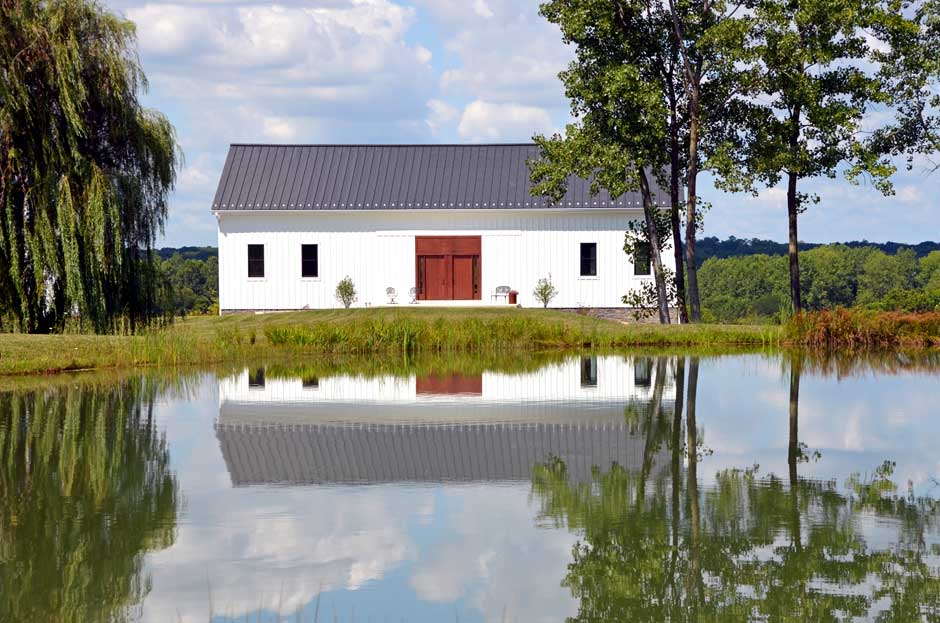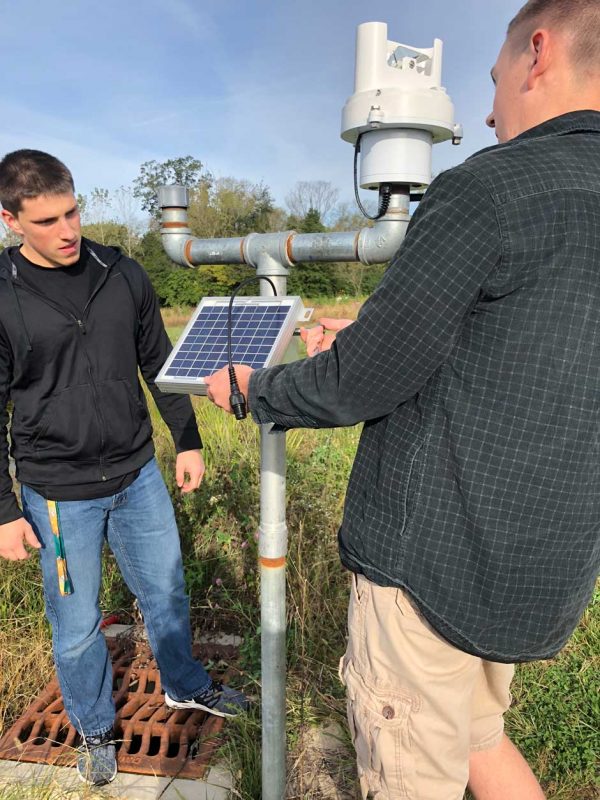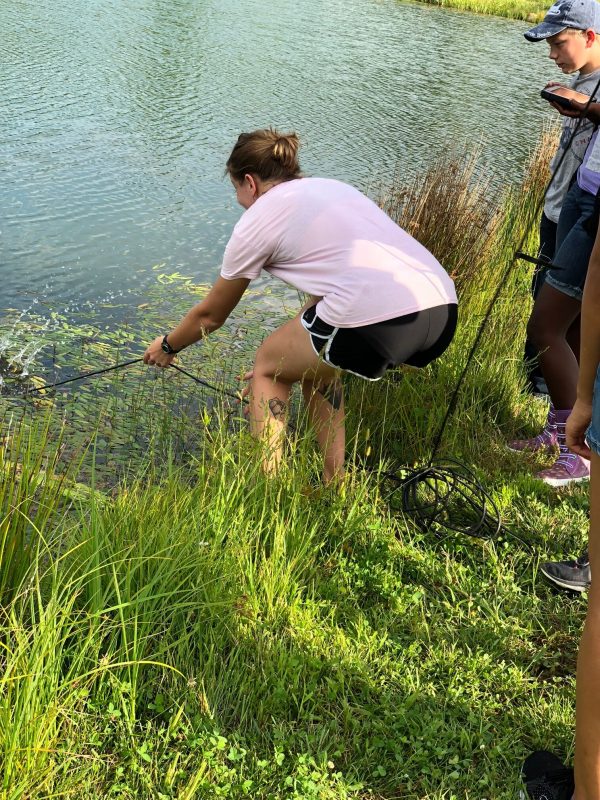Restoration, Testing, Research and Education
 The Fondriest Center for Environmental Studies (Credit: Fondriest Staff)
The Fondriest Center for Environmental Studies (Credit: Fondriest Staff)A few years after Ohio became a state in 1803, George Harner arrived in Greene County with a land deed signed by then-President Thomas Jefferson and Secretary of State James Madison. The homestead was largely old forest and wetlands and also included a fen-fed stream—the Beaver Creek.
As was the case with much of the Ohio Territory, the forests eventually gave way to land clearing and grain farming. Harner’s descendants, including his son John and John’s wife, Sarah Koogler, continued to work the rich soil for many years to follow.
Much of the original property and surrounding land has fallen prey to urban sprawl. However, several protected areas remain today, including the Beaver Creek Wetlands, Koogler Wetland/Prairie Reserve, Beaver Creek Wildlife Area, Siebenthaler Fen, Fairborn Marsh, and the newly-established Fondriest Center for Environmental Studies.
Fondriest Environmental, a leading supplier of monitoring products, purchased a 72-acre tract in 2014 which serves as the site for the field station. The Fondriest team then initiated a large restoration, including invasive species removal, sustainable agriculture practices, and erosion control measures.
The team also added a stocked lake with native shoreline plantings, and preserved a mid-19th-century timber-framed barn onsite. The facility and conference center supports a wide range of uses.
This new biological field station initiative is consistent with the company’s vision and values and has become an essential part of the business strategy. The technology deployed at the station showcases some of what is possible in the field.
A real-time network of monitoring sensors collects, records, and transmits environmental parameters from specific areas of concern to the cloud. Data is presented on flat-screen displays in a conference center and is available to researchers, visitors, and the public. Water level, water quality, stream flow, and weather conditions are continuously recorded. Several environmental webcams capture video and still images for continuous visual record and can be accessed remotely.
Product and System Testing
The Fondriest field station represents more than an ethics of sustainable environmental practices. It is also an expression of our company commitment to reliable products that have been tested and optimized in the field to meet actual conditions.
Fondriest engineers and scientists use the facilities and property to test new and existing products and technologies in real-world deployments. This field testing helps certify product performance and sensor accuracy for both company products and the many brands the company supplies. This hands-on work exposes the R/D staff to many of the uncertainties and obstacles associated with field deployments and ultimately leads to more reliable and easier-to-use products and systems.

Application scientists install sensors at the station. (Credit: Fondriest Staff)
Set Up and Training
One of the greatest uncertainties for field scientists and other professionals deploying equipment is how it will work in action. Industry professionals regularly visit the Station for training with Fondriest application engineers.
Calibration, systems integration and deployment training sessions are available for technicians before equipment is shipped to the project site. With this approach, personnel can be fully prepared and knowledgeable before a project begins.
Educational Outreach
Station staff work with K-12 programs to support experiential learning through sampling and monitoring. Staff scientists guide students in activities like the deployment of a data buoy that records water quality data and using water quality meters. Real-time data collected at the station is available to students and teachers on mobile devices and computers, allowing for field data review and analysis in the classroom.
Programs like these provide excellent opportunities for students to foster an interest in the environment and grow into passionate scientists as well as the environmental stewards of tomorrow.

A Wright State University student shows elementary students how water quality is measured. (Credit: Fondriest Staff)
University Research
Fondriest scientists and engineers support local universities to prepare science students for professional careers. They attain valuable skills by learning the techniques and methods for sampling and environmental monitoring that many organizations perform regularly. Graduate and undergraduate students can perform studies from start to finish by developing a plan, carrying out the research and presenting data and results.
Naturalists
Whitetail deer, coyote, waterfowl, raptors, and other wildlife make their home near the field station and in the surrounding areas. Habitat restoration efforts include the installation of bluebird and duck boxes, the maintenance of native wildflower meadows, the construction of a fish structure, invasive plant removal, and boundary planting of native grasses. A honey bee apiary located on the property encourages pollinators and, in turn, helps to maintain a balanced ecosystem.
A lake provides habitat for native fish, frogs, snakes, and turtles, and is monitored in real-time with a NexSens CB series buoy for water quality and weather conditions. The water level is continually recorded at the outfall along with rainfall and other weather parameters. The data are available 24/7 at the datacenter.
Members of the Fondriest staff as well as local citizens serve at the station as naturalists. The group documents intriguing flora and fauna, which are uploaded and presented on WQData LIVE web datacenter. The data center is accessible on any platform with internet and gives the flexibility of mobility and data upload in the field.

The Fondriest Center for Environmental Studies is home to many forms of wildlife such as chipmunks, deer and Monarch butterflies. (Credit: Fondriest Staff)
Conference Center
With ample meeting space, a full kitchen, restrooms, sleeping quarters, and a large study/workspace with great views of the natural areas surrounding the site, visiting scientists and special interest groups find the center accommodating and inviting. Extensive care and thought went into the restoration, from the hand-built fixtures to the handsome timber wood that was preserved from the original structure.
The staff works with local organizations and special interest groups that are dedicated to conservation and restoration of the natural areas surrounding the property. The conference center is a great space for groups like these to meet and discuss future plans. Learn more at fondriest.com.




0 comments